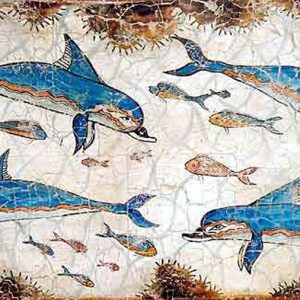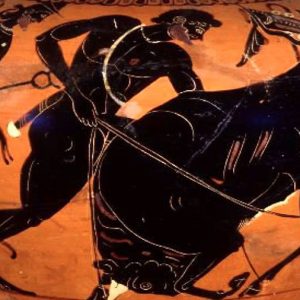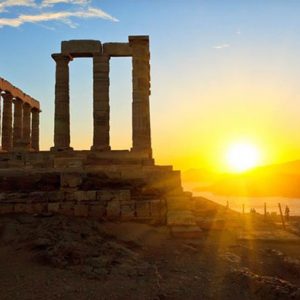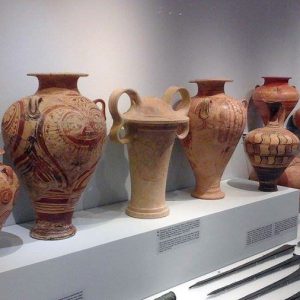
- Saturday January 12, 2019
Minoan religion
In Minoan religion (as in its society) little is known, and much fantasized. Can we (western liberal democrats – in essence) comprehend, three millennia on, a society so far off… we have enough trouble contemplating contemporary ones not our own. Moreover we are faced by a crippling disadvantage … we can neither talk to a Minoan nor read what one wrote on this topic. But academics abhor a vacuum… so people try, using conjecture and imagination. Sometimes sanctified by having footnotes attached.
Religion is a philosophy of life, an attempt to explain. The core beliefs are expressed by things done, things sung, things shown and things envisioned. Only the third – objects – and the first in part – more objects – are there for the archaeologist to find, classify and ponder over.
Looking at contemporary bronze-age cultures, whose religious beliefs are written down for us, we might conclude that religion permeated everything… there was little true Secular/Religious divide. A Palace can be for a king or a bishop after all … The two zones probably intermeshed, pretty seamlessly … as they can do today for – say – a devout Hindu, and could do in the medieval church. The divine (or magic) runs through and activates all things … inanimate as well as organic.
The Palatial Minoan world was highly structured (what came before is potentially another matter): there were established ways of doing things. Right ways. Some of these ‘ways’ can literally be seen in slightly raised, narrow and straight paved walk-ways … along which processional movement could be directed. Such precision, however colorfully and noisily practiced, argues a canon of action, in turn based on structured beliefs.
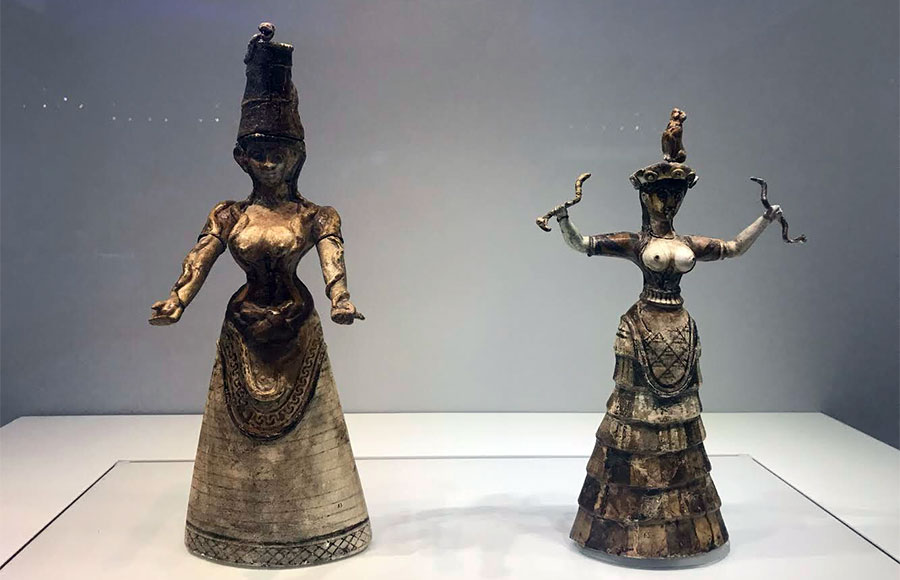
Such order in a society is often mirrored in organized steps and stages … some of these we can detect in the hairdos of the Minoan/Aegean elites, where age and sex is reflected in the amount of hair and its dressing. Probably then, there were rites marking one’s passage from – say – child to youth to adult: things laid aside, others taken up. These moments are also perfect opportunities for learning important aspects of one’s group, a sort of passing on of cultural DNA. Secrecy, as in the Eleusinian mysteries of historical Greece, may have been crucial.
What do we have left to us?
Places of worship … some open-aired hilltops, where a mass of people could assemble; or in contrast deep-plunging enclosed caverns, where numbers could be accommodated less easily all at once; countryside complexes of structures and abundant water. These are all ‘natural’, if you like. But then there are the house, villa and palatial shrines … indoors and able to deal with only a few worshippers at a time. Fittingly, the palatial and elite versions get very complicated … rooms of a special and repeating plan (Lustral Basins). Sometimes representations of the very buildings are carved onto stone vases, models made out of clay. Later, simpler stand-alone rooms, with benches and figurines and simple goods (pebbles were a favorite) provided smaller communities with a focal point … perhaps a bit like country chapels do in the ModernGreek world.
Images of worship … these are to be seen everywhere, from wall-paintings to small gold signet rings and sealstones, via carved ivory boxes. From these we can see repeating elements in their behavior. The processions of women, sometimes dancing; men in serried ranks before a male personage; women embracing rocks, clasping trees, collecting crocus-flowers, on swings, bearing symbols of power (women had a major role in Minoan society .. at the elite levels at least). Gods seem to float down from the heavens … epiphanies are regular modes of revelation. But who are humans, who deities, and who the members of the regulating religious orders? We cannot tell them apart … let alone understand the symbolism so richly expressed.
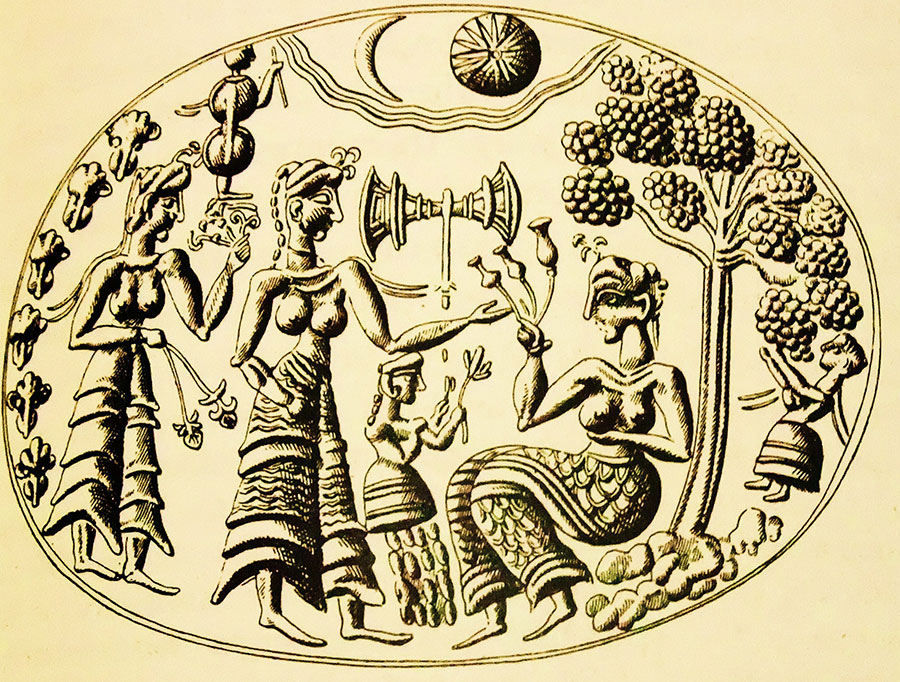
Objects used in worship … again, an enormously rich array … ranging from all sorts of utensils and vases in clay, stone and metal; votive by the thousands … miniatures of tools and weapons, figurines human and animal; models of shrines and acts of worship. And of course the mysterious symbols … the scarf with its knot, the double-axe; the costumes shown in every media. And the remains of drink and food consumed, and bonfires lit to blaze against the coming of a winter’s solstice (perhaps).
Names to be worshipped … Here, thanks to palace bureaucracy, we do recover some of the gods existing at the end of the Palatial era on Crete … some will become Olympians, like Zeus, Poseidon and Dionysus for example, others are home-grown divinities such as Eileithyia, and the nameless Potnia (Mistress of .. this and that). We see mentioned shrines, and the gifts made to them and to the attendant priests, of whatever sex.
And so it goes. Lists and categories and images and objects. But we are not one whit closer to hearing their hymns or learning the casting of their spells or appreciating their cosmogony.
But then, if you studied the material forms (inside and out) of churches across England, but could not read a word of the literature … certainly you would make lists of fonts and gravestones and altars, but would you ever guess that they were all for the one God of Love?
By KnossosGuides
